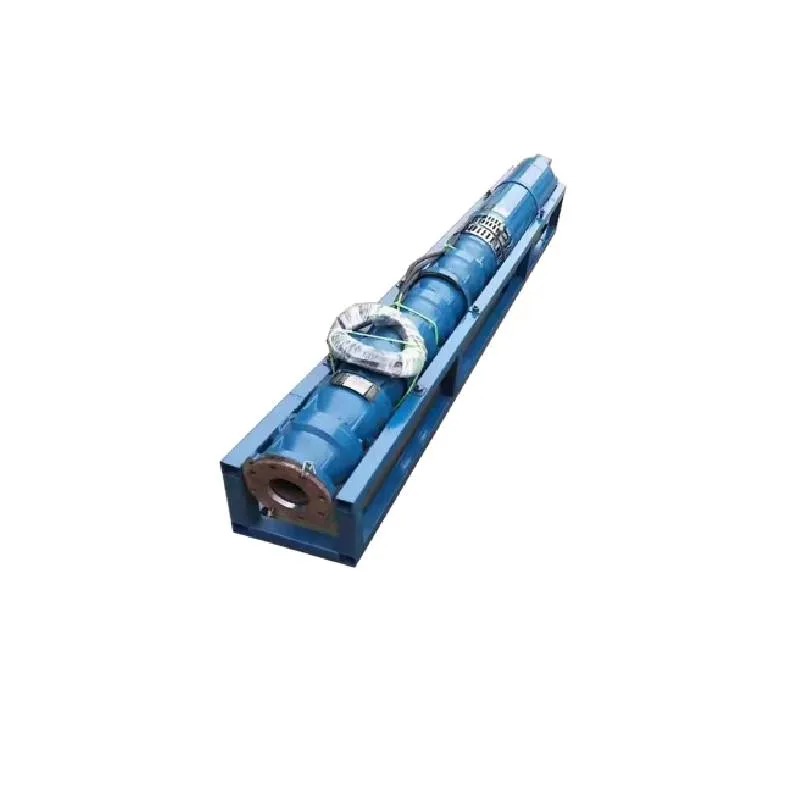Nov . 16, 2024 15:29 Back to list
how to install submersible well pump
How to Install a Submersible Well Pump A Comprehensive Guide
Installing a submersible well pump can be a significant yet rewarding project that provides a reliable water source for your home or agricultural needs. This guide will walk you through the process to ensure a successful installation, covering the necessary tools, preparation steps, and installation techniques.
Understanding Submersible Well Pumps
A submersible well pump is designed to be submerged in water and is typically used to pump water from deep underground sources. Unlike surface pumps, submersibles are more efficient for deep well applications because they push water to the surface rather than relying on suction. Before diving into installation, it's essential to understand the specific requirements of your well and the specifications of the pump you've purchased.
Tools and Materials Needed
Before you start, gather the following tools and materials
1. Submersible Well Pump Specific to your well depth and water needs. 2. Electrical Wiring Appropriately rated for the pump's voltage. 3. Wrenches and Pliers For tightening fittings and connections. 4. PVC Pipe or Piping System To connect the pump to the surface. 5. Well Cap To seal the top of your well. 6. Water Level Measuring Tape To determine the pump's placement. 7. Safety Gear Gloves, goggles, and a mask.
Preparation Steps
1. Check Local Regulations Before starting the installation, check for local regulations or permits required for well installations. Compliance is critical to avoid potential fines or issues with your water supply.
2. Determine Water Level Use a water level measuring tape to determine the depth of your well and the static water level. This information is crucial for choosing the correct pump size and depth placement.
3. Select the Pump Choose a pump that meets your depth and volume requirements. Consult with a professional if necessary to ensure you purchase the right model.
Installation Process
Step 1 Assemble the Pump
how to install submersible well pump

Following the manufacturer’s instructions, assemble your submersible pump. This often involves attaching the discharge head, which is the part where water exits the pump. Ensure all connections are secure to prevent leaks during operation.
Step 2 Prepare the Drop Pipe
Install a drop pipe that will connect the pump to the surface. If using PVC pipe, cut it to the appropriate length based on the depth of your well. Make sure to use threaded fittings to allow for easy adjustments.
Step 3 Lower the Pump
Carefully lower the pump into the well. It’s essential to avoid dropping or hitting the pump against the well's sides, which could cause damage. Use a rope or a well pump installation tool to lower it slowly. Ensure the pump is submerged at the right depth, typically around 10-20 feet below the static water level for optimal performance.
Step 4 Connect the Electrical Supply
Electrical connections must be made in compliance with local codes. Run the electrical cable through a suitable conduit from the pump up to the wellhead. Connect the cable to the pump’s wiring harness following the manufacturer's instructions and ensure all connections are waterproof.
Step 5 Install the Well Cap
Once your pump is in place, it’s essential to seal the well to prevent contamination. Install a well cap that securely fits over the top of the well casing. This cap will protect the well from debris and other potential contaminants.
Step 6 Test the System
After all connections are secure, turn on the power supply to the pump. Check for any leaks along the piping and at the connections. Allow the pump to run for a few minutes, observing the water flow and ensuring that everything functions correctly.
Conclusion
Installing a submersible well pump can seem daunting, but with proper planning and execution, it can be accomplished as a DIY project. Always prioritize safety and adhere to local regulations to ensure a successful installation. With a properly installed submersible pump, you'll have a reliable water source that serves your needs for years to come. If you encounter significant issues or are unsure at any step, don’t hesitate to consult a professional.
-
Submersible Water Pump: The Efficient 'Power Pioneer' of the Underwater World
NewsJul.01,2025
-
Submersible Pond Pump: The Hidden Guardian of Water Landscape Ecology
NewsJul.01,2025
-
Stainless Well Pump: A Reliable and Durable Pumping Main Force
NewsJul.01,2025
-
Stainless Steel Submersible Pump: An Efficient and Versatile Tool for Underwater Operations
NewsJul.01,2025
-
Deep Well Submersible Pump: An Efficient 'Sucker' of Groundwater Sources
NewsJul.01,2025
-
Deep Water Well Pump: An Efficient 'Sucker' of Groundwater Sources
NewsJul.01,2025
-
 Submersible Water Pump: The Efficient 'Power Pioneer' of the Underwater WorldIn the field of hydraulic equipment, the Submersible Water Pump has become the core equipment for underwater operations and water resource transportation due to its unique design and excellent performance.Detail
Submersible Water Pump: The Efficient 'Power Pioneer' of the Underwater WorldIn the field of hydraulic equipment, the Submersible Water Pump has become the core equipment for underwater operations and water resource transportation due to its unique design and excellent performance.Detail -
 Submersible Pond Pump: The Hidden Guardian of Water Landscape EcologyIn courtyard landscapes, ecological ponds, and even small-scale water conservancy projects, there is a silent yet indispensable equipment - the Submersible Pond Pump.Detail
Submersible Pond Pump: The Hidden Guardian of Water Landscape EcologyIn courtyard landscapes, ecological ponds, and even small-scale water conservancy projects, there is a silent yet indispensable equipment - the Submersible Pond Pump.Detail -
 Stainless Well Pump: A Reliable and Durable Pumping Main ForceIn the field of water resource transportation, Stainless Well Pump has become the core equipment for various pumping scenarios with its excellent performance and reliable quality.Detail
Stainless Well Pump: A Reliable and Durable Pumping Main ForceIn the field of water resource transportation, Stainless Well Pump has become the core equipment for various pumping scenarios with its excellent performance and reliable quality.Detail
